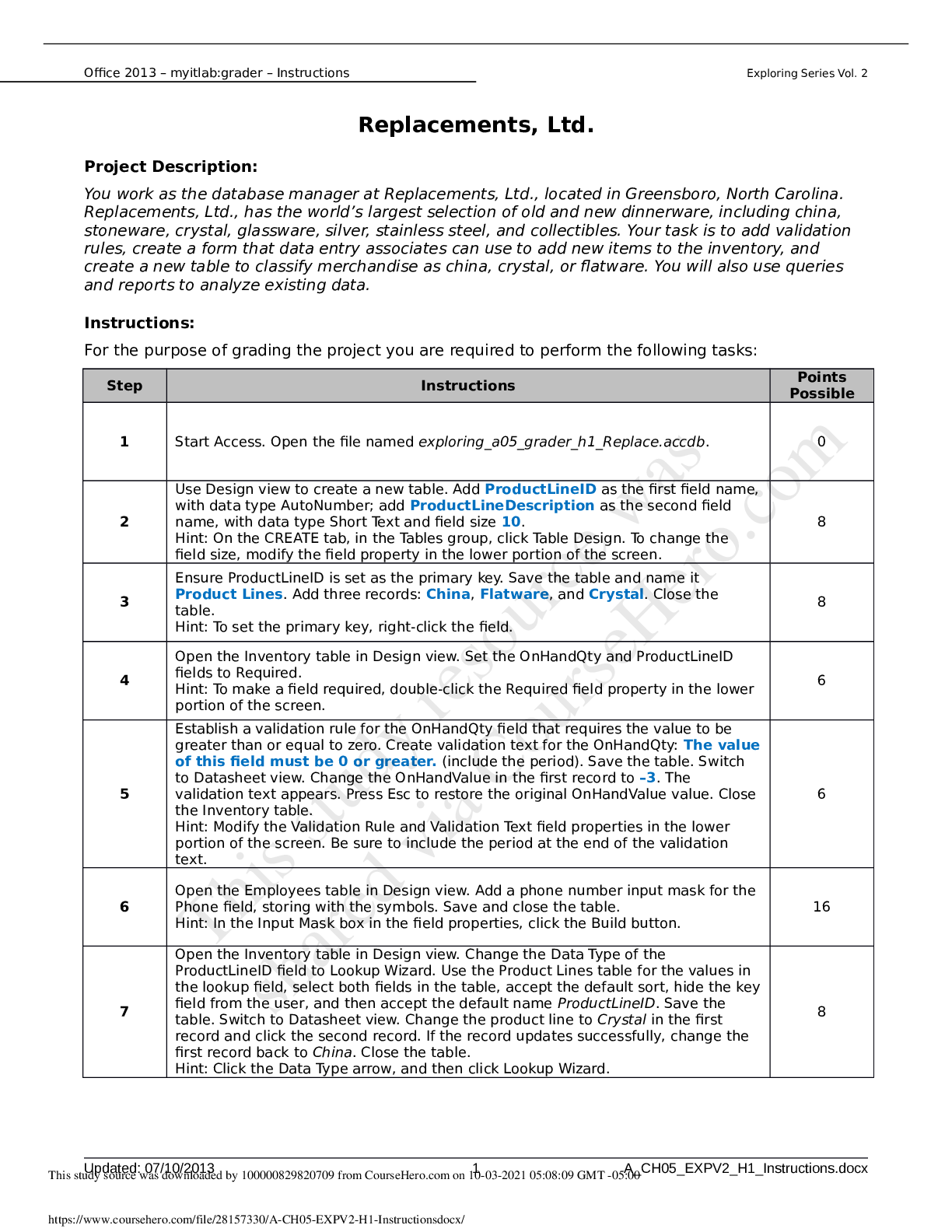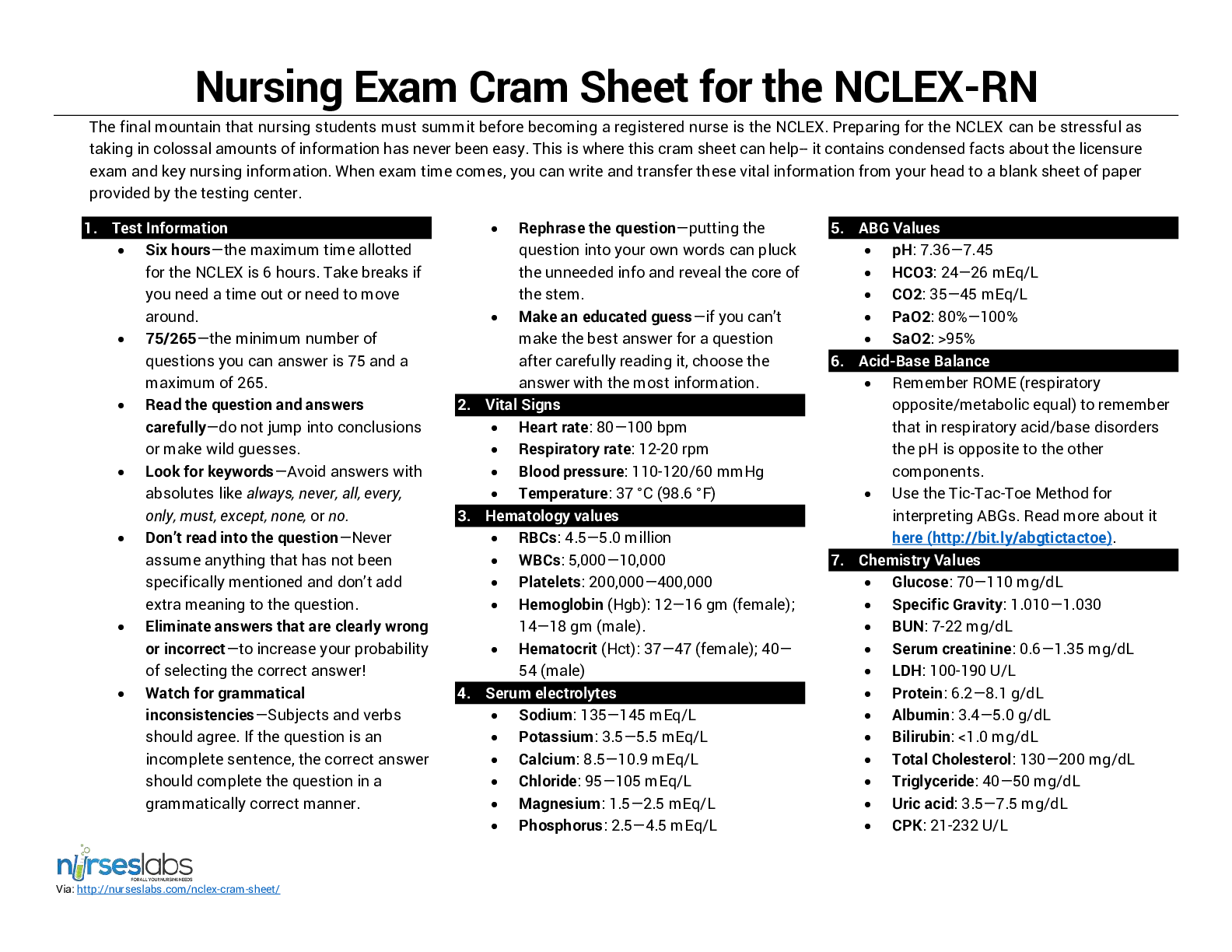*NURSING > DISCUSSION POST > NURS 6630 Week 1 DB 2021 (All)
NURS 6630 Week 1 DB 2021
Document Content and Description Below
Initial Post (Week 1: Foundational Neuroscience) Explain the agonist-to-antagonist spectrum of action of psychopharmacologic agents Psychopharmacological treatment agents vary for each impending con... dition, in regards to how they are prescribed. Hence, the treatment options for each psychopharmacological agent has the ability to function as an agonist or an antagonist (Stahl, 2013). With so many options from receptors, ligands, biological pathways, etc. there are many possibilities for therapeutics and treatments for diseases and disorders to determine which treatment option is best based on the individual. The effects that psychotropic drugs have on specific molecular sites can cause an influence in neurotransmission (Stahl, 2013). Psychopharmacologic agents that function as an agonist or antagonist will cause an impact on the way neurotransmitters to function at the receptor site on a post-synaptic neuron (Stahl, 2013). In order to determine the action of an agonist and antagonist on a psychopharmacologic agent; we must first understand what an agonist and antagonist do. An agonist is a molecule that mimics the effects of a neurotransmitter by binding and stimulating the receptor site on a post-synaptic neuron to produce a response (Stahl, 2013). An antagonist, on the other hand, opposes the effect of the agonist, by blocking the action of neurotransmission, but once blocked, the antagonist does nothing (Stahl, 2013). An example of how a psychopharmacologic agent works as an agonist is by imitating a normal chemical within the body, classified as a neurotransmitter. The way that this works is that an agent may bind to a receptor site intended for a neurotransmitter; however, with both the agent and neurotransmitter both having similar components would lead the receptor to think it was the neurotransmitter, thus causing the agonist to bind to the receptor and causes a similar response of firing of the neuron and an action potential, which causes an increased effect of the neurotransmitter, this is the effect of an agonist (Nutt & Lingford-Hughes, 2007). An example of a psychopharmacological agent that is an agonist is the agent sertraline and the neurotransmitter serotonin; sertraline works by boosting the neurotransmitter serotonin (Stahl, 2017). An example of how a psychopharmacologic agent that works as an antagonist is by blocking the binding sites for a neurotransmitter. The way that this works is that an agent binds to the receptor site and blocks the site, subsequently, a neurotransmitter wants to bind and cause the channel to open, but it is being blocked by the antagonist and cannot open the receptor site. However, while the neurotransmitter is still producing effects to bind to the receptor, the agent is in place. Although the antagonists are preventing the actions of the agonists, there is no activity of their own in the absence of the neurotransmitter or agonist, thus being called “silent” (Nutt & Lingford-Hughes, 2007). However, it is important to not consider the antagonist as all bad, in fact, it is possible that a full agonist can cause maximal activation, which can cause overstimulation of neurotransmitters. In this case, the blocking effects of an antagonist on the neurotransmitter may be desired (Stahl, 2013). An example of psychopharmacological neurotransmitters that work as an antagonist is histamine and acetylcholine (Stahl, 2013). The spectrum of agonist to antagonist spectrum ranges from full agonist, partial agonist, silent antagonist, and inverse agonists (Stahl, 2013). There are various drugs that have neurotransmitter binding effects, the first is an agonist which I have discussed above. The next is [Show More]
Last updated: 2 years ago
Preview 1 out of 6 pages

Buy this document to get the full access instantly
Instant Download Access after purchase
Buy NowInstant download
We Accept:

Reviews( 0 )
$15.00
Can't find what you want? Try our AI powered Search
Document information
Connected school, study & course
About the document
Uploaded On
Sep 06, 2021
Number of pages
6
Written in
Additional information
This document has been written for:
Uploaded
Sep 06, 2021
Downloads
0
Views
69













